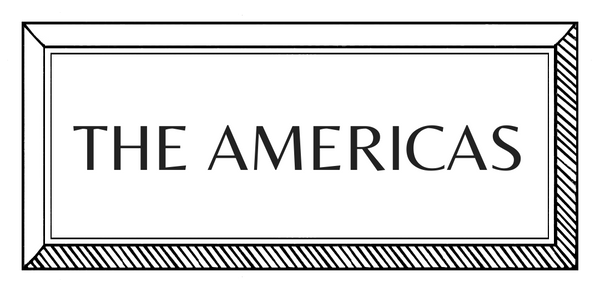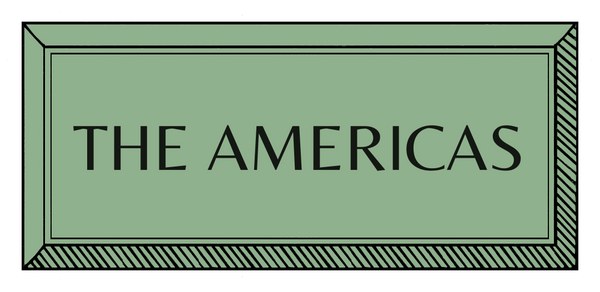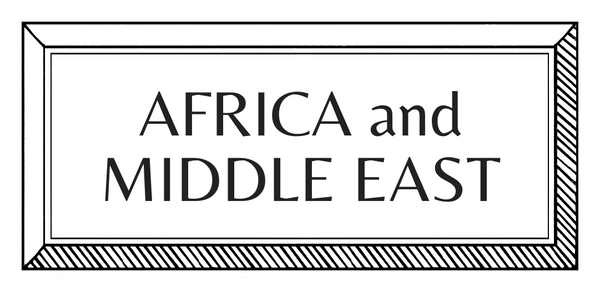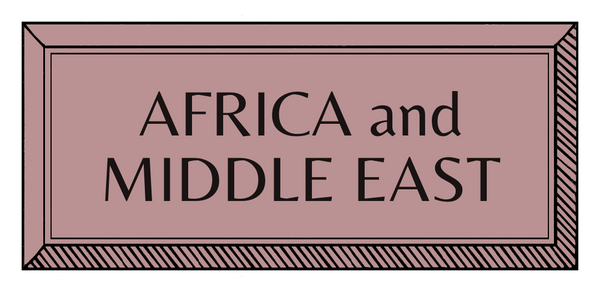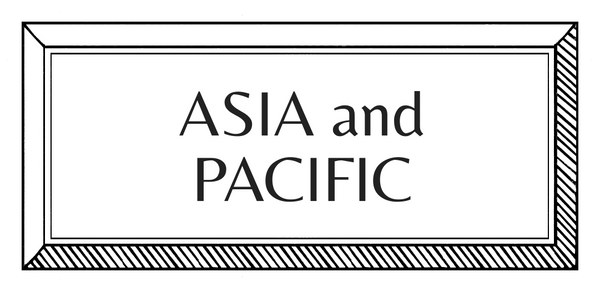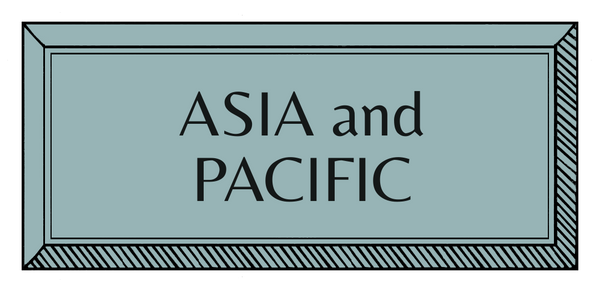CRAFT STORIES | ASIA | CHINA | TEXTILES
Decoding Chinese Carpets

The mountains of Gansu, China © Sara Pierdoná
Sara Pierdoná travels through rural China, decoding the mythological symbols in classical Chinese carpets and visiting one of the country's last remaining carpet workshops.
It is thanks to its colors - or rather, their moderation - that, in a pile of carpets, a Chinese carpet will immediately stand out. Whereas a Persian carpet has on average a dozen or more shades, a typical Chinese carpet is content with four or five. As a result, shapes float freely on the surface, giving the impression of a vast sky where mischievous dragons and mysterious symbols chase and scatter.
Perhaps though, an historical twist forces us to observe their colors differently, sparking our imagination. After all, it is well known that the sumptuous yellows of imperial carpets were once flaming reds, which faded over time to the hue now universally associated with Chinese carpets.
I once heard a great carpet enthusiast declare that all carpets fall into two categories: court carpets, destined for high-ranking patrons, and every other. Since the former make use of a pre-established symbology, decoding their meanings is quite easy for an expert. Only when the craftsman was free to immerse himself in his work did he unleash the instinctual forms of collective mythology on the loom. Since Chinese carpets were mostly court carpets, they did not interest him.

Court carpet; Qing Dynasty, 18th-19th century; Gift of Miriam and Ira D. Wallach, 1991 © Metropolitan Museum of Art
But he failed to reveal an intriguing puzzle hidden within Chinese carpets, that of the calembour, or pun. Chinese is a very subtle language, possessing around 400 sound syllables, compared to some 10,000 in English, which has generated a rich culture of homophones, ingeniously reproduced even on embroideries.
For example, when a stylised bat appears on a Chinese carpet, it could represent the maker's desire for happiness - because the words 'bat' and 'happiness' are pronounced the same way. Similar explanations may apply to the figures of the deer, the lotus next to the golden fish, the rooster and many others. In this respect, one could stand in front of a Chinese carpet and read it as a sophisticated play on words.
The advent of Chinese carpets was an aesthetic shock for the Western market, and popular approval was swift and unconditional. Prominent figures, such as Louis Comfort Tiffany and Scofield Thayer, became avid collectors, and in 1920 alone there were 15 dedicated auctions in New York. But then, to the general bewilderment and disappointment of dealers and collectors, the sales suddenly ceased: the sources, which seemed so plentiful, were in fact exhausted.

Tablet with design for a carpet; Qing Dynasty, 18th century; Gift of James F. Ballard, 1923 © Metropolitan Museum of Art
Sadly, fewer than 600 classical Chinese carpets survive today. The Beijing Palace Museum has the largest collection, the Metropolitan Museum, New York, and the Textile Museum, Washington, have small collections, and the rest live in private homes. Carpets bought in the 1900s by Western tourists on honeymoon are now being auctioned as priceless one-offs. Bidding competitively are collectors and institutions backed by the Chinese government, in the throes of recovering its lost heritage.
There is a place, however, where the Chinese carpet remains a man-made object, produced with tender attention to detail and hard manual labour. Across its two workshops in Gansu, the region most representative of Silk Road folklore, Muni Carpets continue the manufacturing of the influential Ming Dynasty. The rugged terrain, once ploughed by caravans, is dotted with ancient fortresses, signal towers, majestic but perilous sections of the Great Wall and paths trodden by monks and camels.
It is a region where sandstorms and cultural tensions rage, but the fast pace of the Economic Miracle seems diluted in the solemn calm of the Yellow River. Co-founder of Muni Carpets, Mr Zhang, chose the location for its history - the Ming Dynasty's finest carpets were produced here - and proximity to the nearby Qilian Mountains, where the wool, obtained from Tan sheep, is considered similar to cashmere.
The artisans at Muni carpets revere and revive ancient production methods. Although carpet designs are updated to suit modern tastes, the processes - from dyeing methods and colours, to weaving and symbolism - remain almost exactly the same as those their glorious predecessors used at court. Only one change has been introduced (mainly for the buoyant Japanese market): the carpets are now 'beaten' for longer than in the past, to make them softer under bare feet.

Terrain, Gansu region, China © Sara Pierdoná
Skilled labour was plentiful when Zhang established his first workshop - even in the 1980s, most in the region knew how to weave - yet the art of carpet making was still in danger, due to the financial incentives given to mass production and deterrents imposed on small family workshops. “I would even say that it has disappeared, and we are one of the very few exceptions,” Zhang admits.
During the Cultural Revolution, Zhang's family was listed among the Five Black Categories and stripped of all possessions. When the Great Famine hit, the family risked starvation until a brave uncle intervened. He uncovered the only valuable heirloom remaining, miraculously hidden from the Maoist guards: a beautiful pair of antique porcelain vases, decorated with the motif of 100 children.
Zhang’s uncle sold them for three sacks of rice. Some 20 years later, Zhang's cousin showed him the results of a US auction; the vases had fetched a staggering sum. It is one of many harrowing stories from this troubled era, and offers context to the fervour and sensitivity Zhang employs in his efforts to safeguard the past.

Artisans at Muni Carpets, one of China's last traditional carpet making workshops © Sara Pierdoná
Words by Sara Pierdoná
Images from Metropolitan Museum of Art and Sara Pierdoná














